
Why Silicon Valley billionaires are prepping for the apocalypse in New Zealand
How an extreme libertarian tract predicting the collapse of liberal
democracies – written by Jacob Rees-Mogg’s father – inspired the likes
of Peter Thiel to buy up property across the Pacific
by Mark O'Connell
by Mark O'Connell
If you’re interested in the end of the world, you’re interested in New Zealand. If you’re interested in how our current cultural anxieties – climate catastrophe, decline of transatlantic political orders, resurgent nuclear terror – manifest themselves in apocalyptic visions, you’re interested in the place occupied by this distant archipelago of apparent peace and stability against the roiling unease of the day.
If you’re interested in the end of the world, you would have been interested, soon after Donald Trump’s election as US president, to read a New York Times headline stating that Peter Thiel, the billionaire venture capitalist who co-founded PayPal and was an early investor in Facebook, considered New Zealand to be “the Future”. Because if you are in any serious way concerned about the future, you’re also concerned about Thiel, a canary in capitalism’s coal mine who also happens to have profited lavishly from his stake in the mining concern itself.
Thiel is in one sense a caricature of outsized villainy: he was the only major Silicon Valley figure to put his weight behind the Trump presidential campaign; he vengefully bankrupted a website because he didn’t like how they wrote about him; he is known for his public musings about the incompatibility of freedom and democracy, and for expressing interest – as though enthusiastically pursuing the clunkiest possible metaphor for capitalism at its most vampiric – in a therapy involving transfusions of blood from young people as a potential means of reversing the ageing process. But in another, deeper sense, he is pure symbol: less a person than a shell company for a diversified portfolio of anxieties about the future, a human emblem of the moral vortex at the centre of the market.
It was in 2011 that Thiel declared he’d found “no other country that aligns more with my view of the future than New Zealand”. The claim was made as part of an application for citizenship; the application was swiftly granted, though it remained a secret for a further six years. In 2016, Sam Altman, one of Silicon Valley’s most influential entrepreneurs, revealed to the New Yorker that he had an arrangement with Thiel whereby in the eventuality of some kind of systemic collapse scenario – synthetic virus breakout, rampaging AI, resource war between nuclear-armed states, so forth – they both get on a private jet and fly to a property Thiel owns in New Zealand. (The plan from this point, you’d have to assume, was to sit out the collapse of civilisation before re-emerging to provide seed-funding for, say, the insect-based protein sludge market.)
In the immediate wake of that Altman revelation, Matt Nippert, a reporter for the New Zealand Herald, began looking into the question of how exactly Thiel had come into possession of this apocalypse retreat, a 477-acre former sheep station in the South Island – the larger, more sparsely populated of the country’s two major landmasses. Foreigners looking to purchase significant amounts of New Zealand land typically have to pass through a stringent government vetting process. In Thiel’s case, Nippert learned, no such process had been necessary, because he was already a citizen of New Zealand, despite having spent no more than 12 days in the country up to that point, and having not been seen in the place since. He didn’t even need to travel to New Zealand to have his citizenship conferred, it turned out: the deal was sealed in a private ceremony at a consulate handily located in Santa Monica.
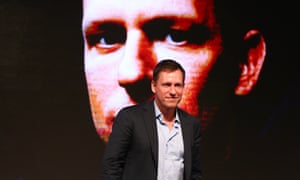
When Nippert broke the story, there was a major public scandal over the question of whether a foreign billionaire should be able to effectively purchase citizenship. As part of his application, Thiel had agreed to invest in New Zealand tech startups, and had implied that he would use his new status as a naturalised Kiwi to promote the country’s business interests abroad. But the focus internationally was on why Thiel might have wanted to own a chunk of New Zealand roughly the size of lower Manhattan in the first place. And the overwhelming suspicion was that he was looking for a rampart to which he could retreat in the event of outright civilisational collapse.
Because this is the role that New Zealand now plays in our unfurling cultural fever dream: an island haven amid a rising tide of apocalyptic unease. According to the country’s Department of Internal Affairs, in the two days following the 2016 election the number of Americans who visited its website to enquire about the process of gaining New Zealand citizenship increased by a factor of 14 compared to the same days in the previous month. In particular, New Zealand has come to be seen as a bolthole of choice for Silicon Valley’s tech elite.
In the immediate aftermath of Trump’s election, the theme of American plutocrats preparing for the apocalypse was impossible to avoid. The week after the inauguration, the New Yorker ran another piece about the super-rich who were making preparations for a grand civilisational crackup; speaking of New Zealand as a “favored refuge in the event of a cataclysm”, billionaire LinkedIn founder Reid Hoffman, a former colleague of Thiel’s at PayPal, claimed that “saying you’re ‘buying a house in New Zealand’ is kind of a wink, wink, say no more”.
Everyone is always saying these days that it’s easier to imagine the end of the world than the end of capitalism. Everyone is always saying it, in my view, because it’s obviously true. The perception, paranoid or otherwise, that billionaires are preparing for a coming civilisational collapse seems a literal manifestation of this axiom. Those who are saved, in the end, will be those who can afford the premium of salvation. And New Zealand, the furthest place from anywhere, is in this narrative a kind of new Ararat: a place of shelter from the coming flood.
Early last summer, just as my interests in the topics of civilisational collapse and Peter Thiel were beginning to converge into a single obsession, I received out of the blue an email from a New Zealand art critic named Anthony Byrt. If I wanted to understand the extreme ideology that underpinned Thiel’s attraction to New Zealand, he insisted, I needed to understand an obscure libertarian manifesto called The Sovereign Individual: How to Survive and Thrive During the Collapse of the Welfare State. It was published in 1997, and in recent years something of a minor cult has grown up around it in the tech world, largely as a result of Thiel’s citing it as the book he is most influenced by. (Other prominent boosters include Netscape founder and venture capitalist Marc Andreessen, and Balaji Srinivasan, the entrepreneur best known for advocating Silicon Valley’s complete secession from the US to form its own corporate city-state.)
The Sovereign Individual’s co-authors are James Dale Davidson, a private investor who specialises in advising the rich on how to profit from economic catastrophe, and the late William Rees-Mogg, long-serving editor of the Times. (One other notable aspect of Lord Rees-Mogg’s varied legacy is his own son, the Conservative MP Jacob Rees-Mogg – a hastily sketched caricature of an Old Etonian, who is as beloved of Britain’s ultra-reactionary pro-Brexit right as he is loathed by the left.)
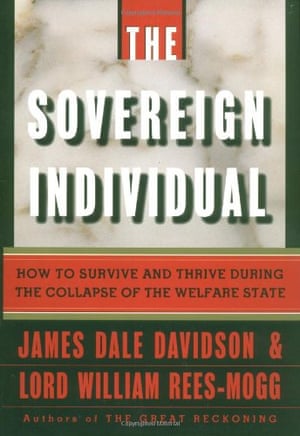
It presents a bleak vista of a post-democratic future. Amid a thicket of analogies to the medieval collapse of feudal power structures, the book also managed, a decade before the invention of bitcoin, to make some impressively accurate predictions about the advent of online economies and cryptocurrencies.
The book’s 400-odd pages of near-hysterical orotundity can roughly be broken down into the following sequence of propositions:
1) The democratic nation-state basically operates like a criminal cartel, forcing honest citizens to surrender large portions of their wealth to pay for stuff like roads and hospitals and schools.
2) The rise of the internet, and the advent of cryptocurrencies, will make it impossible for governments to intervene in private transactions and to tax incomes, thereby liberating individuals from the political protection racket of democracy.
3) The state will consequently become obsolete as a political entity.
4) Out of this wreckage will emerge a new global dispensation, in which a “cognitive elite” will rise to power and influence, as a class of sovereign individuals “commanding vastly greater resources” who will no longer be subject to the power of nation-states and will redesign governments to suit their ends.
The Sovereign Individual is, in the most literal of senses, an apocalyptic text. Davidson and Rees-Mogg present an explicitly millenarian vision of the near future: the collapse of old orders, the rising of a new world. Liberal democracies will die out, and be replaced by loose confederations of corporate city-states. Western civilisation in its current form, they insist, will end with the millennium. “The new Sovereign Individual,” they write, “will operate like the gods of myth in the same physical environment as the ordinary, subject citizen, but in a separate realm politically.” It’s impossible to overstate the darkness and extremity of the book’s predictions of capitalism’s future; to read it is to be continually reminded that the dystopia of your darkest insomniac imaginings is almost always someone else’s dream of a new utopian dawn.
Davidson and Rees-Mogg identified New Zealand as an ideal location for this new class of sovereign individuals, as a “domicile of choice for wealth creation in the Information Age”. Byrt, who drew my attention to these passages, had even turned up evidence of a property deal in the mid-1990s in which a giant sheep station at the southern tip of the North Island was purchased by a conglomerate whose major shareholders included Davidson and Rees-Mogg. Also in on the deal was one Roger Douglas, the former Labour finance minister who had presided over a radical restructuring of New Zealand economy along neoliberal lines in the 1980s. (This period of so-called “Rogernomics”, Byrt told me – the selling off of state assets, slashing of welfare, deregulation of financial markets – created the political conditions that had made the country such an attractive prospect for wealthy Americans.)
Thiel’s interest in New Zealand was certainly fuelled by his JRR Tolkien obsession: this was a man who had named at least five of his companies in reference to The Lord of the Rings, and fantasised as a teenager about playing chess against a robot that could discuss the books. It was a matter, too, of the country’s abundance of clean water and the convenience of overnight flights from California. But it was also inseparable from a particular strand of apocalyptic techno-capitalism. To read The Sovereign Individual was to see this ideology laid bare: these people, the self-appointed “cognitive elite”, were content to see the unravelling of the world as long as they could carry on creating wealth in the end times.
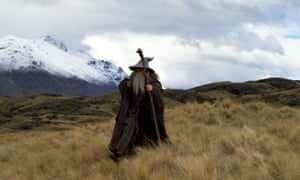
It was just this ideological dimension, as it happened, that was the focus of a project Byrt himself had recently got involved in, a new exhibition by the artist Simon Denny. Denny, a significant figure in the international art scene, was originally from Auckland, but has lived for some years in Berlin. Byrt described him as both “kind of a genius” and “the poster-boy for post-internet art, whatever that is”; he characterised his own role in the project with Denny as an amalgamation of researcher, journalist and “investigative philosopher, following the trail of ideas and ideologies”.
The exhibition was called The Founder’s Paradox, a name that came from the title of one of the chapters in Thiel’s 2014 book, Zero to One: Notes on Startups, or How to Build the Future. Together with the long and intricately detailed catalogue essay Byrt was writing to accompany it, the show was a reckoning with the future that Silicon Valley techno-libertarians like Thiel wanted to build, and with New Zealand’s place in that future.
These were questions I too was eager to reckon with. Which is to say that I myself was interested – helplessly, morbidly – in the end of the world, and that I was therefore interested in New Zealand. And so I decided to go there, to see for myself the land that Thiel had apparently set aside for the collapse of civilisation: a place that would become for me a kind of labyrinth, and whose owner I was already beginning to mythologise as the monster at its centre.
Within about an hour of arriving in Auckland, I was as close to catatonic from fatigue as made no difference, and staring into the maw of a volcano. I was standing next to Byrt, who’d picked me up from the airport and, in a gesture I would come to understand as quintessentially Kiwi, dragged me directly up the side of a volcano. This particular volcano, Mount Eden, was a fairly domesticated specimen, around which was spread one of the more affluent suburbs of Auckland – the only city in the world, I learned, built on a technically still-active volcanic field.
I was a little out of breath from the climb and, having just emerged in the southern hemisphere from a Dublin November, sweating liberally in the relative heat of the early summer morning. I was also experiencing near-psychotropic levels of jetlag. I must have looked a bit off, because Byrt – a bearded, hoodied and baseball-capped man in his late 30s – offered a cheerful apology for playing the volcano card so early in the proceedings.
“I probably should have eased you into it, mate” he chuckled. “But I thought it’d be good to get a view of the city before breakfast.”
The view of Auckland and its surrounding islands was indeed ravishing – though in retrospect, it was no more ravishing than any of the countless other views I would wind up getting ravished by over the next 10 days. That, famously, is the whole point of New Zealand: if you don’t like getting ravished by views, you have no business in the place; to travel there is to give implicit consent to being hustled left, right and centre into states of aesthetic rapture.

“Plus I’ve been in the country mere minutes,” I said, “and I’ve already got a perfect visual metaphor for the fragility of civilisation in the bag.”
I was referring here to the pleasingly surreal spectacle of a volcanic crater overlaid with a surface of neatly manicured grass. (I jotted this observation down in my notebook, feeling as I did so a smug infusion of virtue about getting some literary non-fiction squared away before even dropping my bags off at the hotel. “Volcano with lawn over it,” I scrawled. “Visual manifestation of thematic motif: Civ as thin membrane stretched over chaos.”)
I remarked on the strangeness of all these Silicon Valley geniuses supposedly apocalypse-proofing themselves by buying up land down here right on the Pacific Ring of Fire, the horseshoe curve of geological fault lines that stretches upward from the western flank of the Americas, back down along the eastern coasts of Russia and Japan and on into the South Pacific.
“Yeah,” said Byrt, “but some of them are buying farms and sheep stations pretty far inland. Tsunamis aren’t going to be a big issue there. And what they’re after is space, and clean water. Two things we’ve got a lot of down here.”
The following day, I went to the gallery in downtown Auckland to take a look at The Founder’s Paradox. Denny, a neat and droll man in his mid-30s, talked me through the conceptual framework. It was structured around games – in theory playable, but in practice encountered as sculptures – representing two different kinds of political vision for New Zealand’s future. The bright and airy ground floor space was filled with tactile, bodily game-sculptures, riffs on Jenga and Operation and Twister. These works, incorporating collaborative and spontaneous ideas of play, were informed by a recent book called The New Zealand Project by a young leftwing thinker named Max Harris, which explored a humane, collectivist politics influenced by Māori beliefs about society.
Down in the low-ceilinged, dungeon-like basement was a set of sculptures based around an entirely different understanding of play, more rule-bound and cerebral. These were based on the kind of strategy-based role-playing games particularly beloved of Silicon Valley tech types, and representing a Thielian vision of the country’s future. The psychological effect of this spatial dimension of the show was immediate: upstairs, you could breathe, you could see things clearly, whereas to walk downstairs was to feel oppressed by low ceilings, by an absence of natural light, by the darkness of the geek-apocalypticism captured in Denny’s elaborate sculptures.
This was a world Denny himself knew intimately. And what was strangest and most unnerving about his art was the sense that he was allowing us to see this world not from the outside in, but from the inside out. Over beers in Byrt’s kitchen the previous night, Denny had told me about a dinner party he had been to in San Francisco earlier that year, at the home of a techie acquaintance, where he had been seated next to Curtis Yarvin, founder of the Thiel-funded computing platform Urbit. As anyone who takes an unhealthy interest in the weirder recesses of the online far-right is aware, Yarvin is more widely known as the blogger Mencius Moldbug, the intellectual progenitor of Neoreaction, an antidemocratic movement that advocates for a kind of white-nationalist oligarchic neofeudalism – rule by and for a self-proclaimed cognitive elite – and which has found a small but influential constituency in Silicon Valley. It was clear that Denny was deeply unsettled by Yarvin’s brand of nerd autocracy, but equally clear that breaking bread with him was in itself no great discomfort.
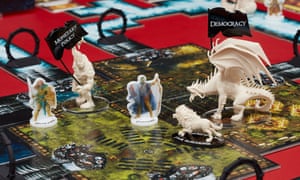
Beneath all the intricacy and detail of its world-building, The Founder’s Paradox was clearly animated by an uneasy fascination with the utopian future imagined by the techno-libertarians of Silicon Valley, and with New Zealand’s role in that future. The exhibition’s centrepiece was a tabletop strategy game called Founders, which drew heavily on the aesthetic – as well as the explicitly colonialist language and objectives – of Settlers of Catan, a cult multiplayer strategy board game. The aim of Founders, clarified by the accompanying text and by the piece’s lurid illustrations, was not simply to evade the apocalypse, but to prosper from it. First you acquired land in New Zealand, with its rich resources and clean air, away from the chaos and ecological devastation gripping the rest of the world. Next you moved on to seasteading, the libertarian ideal of constructing manmade islands in international waters; on these floating utopian micro-states, wealthy tech innovators would be free to go about their business without interference from democratic governments. (Thiel was an early investor in, and advocate of, the seasteading movement, though his interest has waned in recent years.) Then you mined the moon for its ore and other resources, before moving on to colonise Mars. This last level of the game reflected the current preferred futurist fantasy, most famously advanced by Thiel’s former PayPal colleague Elon Musk, with his dream of fleeing a dying planet Earth for privately owned colonies on Mars.
The influence of the Sovereign Individual, and of Byrt’s obsession with it, was all over the show. It was a detailed mapping of a possible future, in all its highly sophisticated barbarism. It was a utopian dream that appeared, in all its garish detail and specificity, as the nightmare vision of a world to come.
Thiel himself had spoken publicly of New Zealand as a “utopia”, during the period in 2011 when he was manoeuvring for citizenship, investing in various local startups under a venture capital fund called Valar Ventures. (I hardly need to tell you that Valar is another Tolkien reference.) This was a man with a particular understanding of what a utopia might look like, who did not believe, after all, in the compatibility of freedom and democracy. In a Vanity Fair article about his role as adviser to Trump’s campaign, a friend was quoted as saying that “Thiel has said to me directly and repeatedly that he wanted to have his own country”, adding that he had even gone so far as to price up the prospect at somewhere around $100bn.
The Kiwis I spoke with were uncomfortably aware of what Thiel’s interest in their country represented, of how it seemed to figure more generally in the frontier fantasies of American libertarians. Max Harris – the author of The New Zealand Project, the book that informed the game-sculptures on the upper level of The Founder’s Paradox – pointed out that, for much of its history, the country tended to be viewed as a kind of political Petri dish (it was, for instance, the first nation to recognise women’s right to vote), and that this “perhaps makes Silicon Valley types think it’s a kind of blank canvas to splash ideas on”.
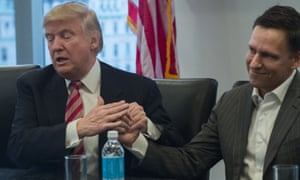
Given her Māori heritage, Quince was particularly attuned to the colonial resonances of the more recent language around New Zealand as both an apocalyptic retreat and a utopian space for American wealth and ingenuity.
“I find it incredibly offensive,” she said. “Thiel got citizenship after spending 12 days in this country, and I don’t know if he’s even aware that Māori exist. We as indigenous people have a very strong sense of intergenerational identity and collectivity. Whereas these people, who are sort of the contemporary iteration of the coloniser, are coming from an ideology of rampant individualism, rampant capitalism.”
Quince’s view was by no means the norm. New Zealanders tend to be more flattered than troubled by the interest of Silicon Valley tech gurus in their country. It’s received by and large as a signal that the tyranny of distance – the extreme antipodean remoteness that has shaped the country’s sense of itself since colonial times – has finally been toppled by the liberating forces of technology and economic globalisation.
“It’s very appealing,” the political scientist Peter Skilling told me, “these entrepreneurs saying nice things about us. We’re like a cat having its tummy rubbed. If Silicon Valley types are welcomed here, it’s not because we’re particularly susceptible to libertarian ideas; it’s because we are complacent and naive.”
Among the leftwing Kiwis I spoke with, there had been a kindling of cautious optimism, sparked by the recent surprise election of a new Labour-led coalition government, under the leadership of the 37-year-old Jacinda Ardern, whose youth and apparent idealism suggested a move away from neoliberal orthodoxy. During the election, foreign ownership of land had been a major talking point, though it focused less on the wealthy apocalypse-preppers of Silicon Valley than the perception that overseas property speculators were driving up the cost of houses in Auckland. The incoming government had committed to tightening regulations around land purchases by foreign investors. This was largely the doing of Winston Peters, a nationalist of Māori descent whose New Zealand First party held the balance of power, and was strongly in favour of tightening regulations of foreign ownership. When I read that Ardern had named Peters as her deputy prime minister, I was surprised to recognise the name – from, of all places, The Sovereign Individual, where Davidson and Rees-Mogg had singled him out for weirdly personal abuse as an arch-enemy of the rising cognitive elite, referring to him as a “reactionary loser” and “demagogue” who would “gladly thwart the prospects for long-term prosperity just to prevent individuals from declaring their independence of politics”.
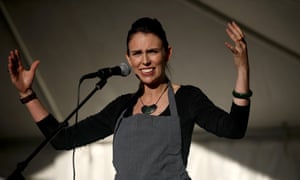
During my time in New Zealand, Ardern was everywhere: in the papers, on television, in every other conversation. On our way to Queenstown in the South Island, to see for ourselves the site of Thiel’s apocalyptic bolthole, Byrt and I were in the security line at Auckland airport when a woman of about our age, smartly dressed and accompanied by a cluster of serious-looking men, glanced in our direction as she was conveyed quickly along the express lane. She was talking on her phone, but looked towards us and waved at Byrt, smiling broadly in happy recognition.
“Who was that?” I asked.
“Jacinda,” he said.
“You know her?”
“We know quite a lot of the same people. We met for a drink a couple of times back when she was Labour’s arts spokesperson.”
“Really?”
“Well yeah,” he laughed, “there’s only so many of us.”
“The endgame for Thiel is essentially The Sovereign Individual,” said Byrt. He was driving the rental car, allowing me to fully devote my resources to the ongoing cultivation of aesthetic rapture (mountains, lakes, so forth). “And the bottom line for me,” he said, “is that I don’t want my son to grow up in that future.”
We were on our way to see for ourselves the part of New Zealand, on the shore of Lake Wanaka in the South Island, that Thiel had bought for purposes of post-collapse survival. We talked about the trip as though it were a gesture of protest, but it felt like a kind of perverse pilgrimage. The term “psychogeography” was cautiously invoked, and with only the lightest of ironic inflections.
“The thing about Thiel is he’s the monster at the heart of the labyrinth,” said Byrt.
“He’s the white whale,” I suggested, getting into the literary spirit of the enterprise.
Byrt’s obsession with Thiel occupied a kind of Melvillean register, yearned toward a mythic scale. It coloured his perception of reality. He admitted, for instance, to a strange aesthetic pathology whereby he encountered, in the alpine grandeur of the South Island, not the sublime beauty of his own home country, but rather what he imagined Thiel seeing in the place: Middle-earth. Thiel’s Tolkien fixation was itself a fixation for Byrt: together with the extreme libertarianism of The Sovereign Individual, he was convinced that it lay beneath Thiel’s continued interest in New Zealand.
Matt Nippert, the New Zealand Herald journalist who had broken the citizenship story earlier that year, told me he was certain that Thiel had bought the property for apocalypse-contingency purposes. In his citizenship application, he had pledged his commitment to devote “a significant amount of time and resources to the people and businesses of New Zealand”. But none of this had amounted to much, Nippert said, and he was convinced it had only ever been a feint to get him in the door as a citizen.
In a cafe in Queenstown, about an hour’s drive from Thiel’s estate, Byrt and I met a man to whom a wealthy acquaintance of Byrt’s had introduced us. A well known and well connected professional in Queenstown, he agreed to speak anonymously for fear of making himself unpopular among local business leaders and friends in the tourism trade. He had been concerned for a while now about the effects on the area of wealthy foreigners buying up huge tracts of land. (“Once you start pissing in the hand basin, where are you gonna wash your face?” as he put to me, in what I assumed was a purely rhetorical formulation.) He told us of one wealthy American of his acquaintance, “pretty left-of-centre”, who had bought land down here to allay his apocalyptic fears in the immediate aftermath of Trump’s election. Another couple he knew of, a pair of bitcoin billionaires, had bought a large lakeside estate on which they were constructing a gigantic bunker.
This was the first I’d heard since coming here of an actual bunker being built. From the point of view of the modern apocalypticist, the whole appeal of the country – its remoteness and stability, its abundant clean water, its vast and lovely reaches of unpeopled land – was that it was itself a kind of reinforced geopolitical shelter, way down there at the bottom of the world.
The people I spoke to in the property business were keen to portray New Zealand as a kind of utopian sanctuary, but to give as little oxygen as possible to the related narrative around the country as an apocalyptic bolthole for the international elite. Over coffee at his golf club near Queenstown, Terry Spice, a London-born luxury property specialist who had recently sold a large estate abutting the Thiel property on Lake Wanaka, said he felt Thiel had highlighted internationally that the country was “a safe haven, and a legacy asset”. He himself had sold land to one very wealthy American client who had called him on the night of the presidential election. “This guy couldn’t believe what was happening. He wanted to secure something right away.” But on the whole, he insisted, this kind of apocalyptically motivated buyer represented a vanishingly small proportion of the market.
Showing me around the high-end beachfront properties he represented about an hour or so north of Auckland, another luxury property specialist named Jim Rohrstaff – a Californian transplant who specialised in selling to the international market – likewise told me that although quite a few of his major clients were Silicon Valley types, the end of the world tended not to be a particular factor in their purchasing decisions.
“Look,” he said, “it might be one strand in terms of what’s motivating them to buy here. But in my experience it’s never been the overriding reason. It’s much more of a positive thing. What they see when they come here is utopia.”
In one sense, I knew what he meant by this. He meant excellent wine. He meant world-class golf. He meant agreeable climate, endless white sand beaches that scarcely aroused the suspicion of the existence of other human beings. But having lately spoken to Khylee Quince about the historical resonances of the concept of utopia, I wondered what else he might mean, and whether he intended to mean it or not.
In Queenstown, before we set out to find the former sheep station Thiel had bought, we went to look for the house he owned in the town itself. This place, we speculated, must have been purchased as a kind of apocalyptic pied-a-terre: somewhere he could base himself, maybe, while whatever construction he had planned for the sheep station was underway. Nippert had given us the address; we found it easily enough, not far from the centre of town, and recognised it right away from one of the paintings in The Founder’s Paradox. It was the sort of house a Bond villain might build if for some reason he’d been forced to move to the suburbs. It looked modestly ostentatious, if such a thing was possible; the front of the building was one giant window, gazing out blankly over the town and the lake below. There was some construction going on in the place. I wandered up the drive and asked the builders if they knew who their client was. “No idea, mate,” they said. They were just doing some renovation on contract. There’d been a fire in the place a while back, apparently. Nothing sinister, just wiring.
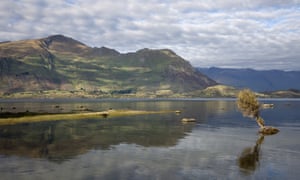
The next day, we made our way to Lake Wanaka, where the larger rural property was located. We rented bikes in the town, and followed the trail around the southern shore of the lake. It got rockier and more mountainous the further we pursued it, and by the time we knew for certain we were on Thiel’s property, I was so hot and exhausted that all I could think to do was plunge into the lake to cool off. I asked Anthony whether he thought the water was safe to drink, and he said he was sure of it, given that its purity and its plenty was a major reason a billionaire hedging against the collapse of civilisation would want to buy land there in the first place. I swam out further into what I had come to think of as Thiel’s apocalypse lake and, submerging my face, I drank so deeply that Anthony joked he could see the water level plunging downward by degrees. In truth, I drank well beyond the point of quenching any literal thirst; in a way that felt absurd and juvenile, and also weirdly and sincerely satisfying, I was drinking apocalypse water, symbolically reclaiming it for the 99%. If in that moment I could have drained Lake Wanaka just to fuck up Thiel’s end-of-the-world contingency plan, I might well have done so.
I suggested I might take a rock, a piece of the place to bring home and keep on my desk, but Byrt warned me that to do so would be a transgression of the Māori understanding of the land’s communal sacredness. We scrabbled up the stony flank of a hill and sat for a while looking out over the calm surface of the lake to the distant snowy peaks, and over the green and undulating fields unfurling into the western distance, all of it the legal possession of a man who had designs on owning a country, who believed that freedom was incompatible with democracy.
Later, we made our way to the far side of the property, bordering the road, where we saw the only actual structure on the entire property: a hay barn. It is the opinion of this reporter that Thiel himself had no hand in its construction.
“There you have it,” said Byrt. “Eyeball evidence that Thiel is stockpiling hay for the collapse of civilisation.” I wish to state categorically that we did not steal so much as a single straw from that barn.
We had made it to the centre of the labyrinth, but it was elsewhere in the end that the monster materialised. In early December, a couple of weeks after I’d left the country, Max Harris, the young Kiwi author whose book Denny and Byrt had used as a counterpoint to Thiel’s ideas, was home for Christmas, and went along to the gallery to see the exhibition.
Down in the basement, in the central chamber – with its low ceilings, its iron vault door, its Führerbunkerishly oppressive vibe – Harris encountered, staring intently downward into the glass case containing the Founders game, a man in shorts and a blue polo shirt, surrounded by a group of younger men, likewise polo-shirted. The older man was doughier and less healthy-looking than he appeared in photographs, Harris told me, but he had little doubt as to his identity.
Harris, who was aware that Peter Thiel had not been seen in New Zealand since 2011, asked the man whether he was who he thought he was; the man smirked and, without raising his eyes from the board game toward Harris, replied that a lot of people had been asking him just that question. Harris asked the man what he thought of the exhibition, and the man paused a long time before saying that it was “actually a work of phenomenal detail”. He asked Harris if he knew the artist, and Harris said that he did, that he himself was in a fact a writer whose work had formed part of the conceptual framework for the show. Of the sheer improbability of these two men– one for whom New Zealand was a means of shoring up his wealth and power in a coming civilisational collapse, one for whom it was home, a source of hope for a more equal and democratic society – just happening to cross paths at an art exhibition loosely structured around the binary opposition of their political views no mention was made, and they went their separate ways.
Thiel left his contact details with the gallery, suggesting that Denny get in touch. He did, and Thiel responded quickly; he’d been intrigued by what he had seen, but claimed to be a little disturbed by how dark his cyber-libertarianism appeared when refracted through the lens of The Founder’s Paradox. In any case, the conversation continued, and they made arrangements to meet on Denny’s next trip to the US.
Denny was eager to keep talking, if only because he was determined to reach a deeper understanding of Thiel’s vision of the future. Byrt, the more straightforwardly political in his antagonism toward Thiel and what he represented, was bewildered by this unexpected turn of events, though strangely thrilled by it, too. For my part, this came as a disorienting rug-pull ending – partly because the monster had materialised, and he was therefore no longer merely a human emblem of the moral vortex at the centre of capitalism, but also an actual human, goofily got up in polo shirt and shorts, sweating in the heat, traipsing along to an art gallery to indulge his human curiosity about what the art world thought of his notoriously weird and extreme politics. A sovereign individual in the same physical environment as us ordinary subject citizens. But it also it deepened the mystery of what Thiel had planned for New Zealand, for the future.
There was one mystery that did get solved, though not by me: the admittedly frivolous enigma of what sort of renovations those builders were working on at the apocalyptic pied-a-terre in Queenstown. Nippert, in a recent New Zealand Herald article, had published the architect’s plans for the place. Thiel was making some alterations to the master bedroom. He was putting in a panic room.
Main image of Lake Wanaka by Johan Lolos/Rex/Shutterstock
Support for this article was provided by a grant from the Pulitzer Center on Crisis Reporting
• Follow the Long Read on Twitter at @gdnlongread, or sign up to the long read weekly email here.



No comments:
Post a Comment